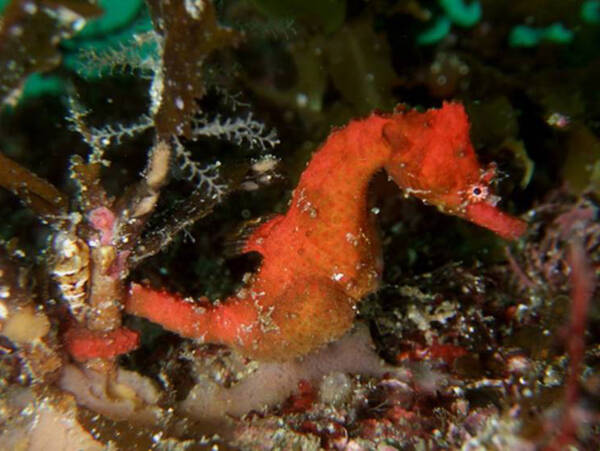The Latin scientific name of the flower seahorse Hippocampus sindonis, and the English name Sindo's Seahorse comes from the name of M. Sindo, the assistant curator of fish at Stanford University, and was coined by Kuiter in 2009. The Japanese name hana tatsu literally means hana (flower or flower, indicating gorgeousness) + tatsu (dragon, or abbreviation of seahorse), referring to the beautiful color and skin filaments of the species. Hippocampus coronatus and Hippocampus mohnikei are the names that have been incorrectly applied to the flower seahorse, not synonymous scientific names. These two incorrectly applied scientific names are actually the scientific names of the crown seahorse (Hippocampus coronatus) and the Japanese seahorse (Hippocampus mohnikei). The flower seahorse is also often mistaken for the crown seahorse or the Japanese seahorse.

Flower seahorses feed mainly on crustaceans. The reproductive biology of flower seahorses is still unclear, except that they are oviparous, with the female laying eggs in the male's brood pouch, where they are fertilized and hatched.
Flower horses are traded as aquarium pets and for use in traditional medicine.
As of 2016, no surveys or population estimates have been conducted specifically for the flower horse. Further research is needed into the biology, ecology, threats, and population dynamics of the flower horse. Flower horses are caught as bycatch in trawl fisheries and subsequently traded, but the level of trade is unclear (2016).
Flower horses may be threatened by degradation of coral reefs and seagrasses, losses from coastal development and pollution, destructive fishing practices such as trawling, ocean acidification, and the effects of climate change (Carpenter et al. 2008; Short et al. 2011).
Listed in the IUCN Red List of Threatened Species (IUCN 2016 ver 3.1) - Least Concern (LC).
Listed in the Convention on International Trade in Endangered Species of Wild Fauna and Flora (CITES) - Appendix II.
Protect wild animals and eliminate game.
Maintaining ecological balance is everyone's responsibility!